-
ARTÍCULO ORIGINAL16/12/2024
Respectful care for postpartum women with sickle cell disease: a netnographic study
Revista Brasileira de Enfermagem. 2024;77(6):e20230545
Resumen
ARTÍCULO ORIGINALRespectful care for postpartum women with sickle cell disease: a netnographic study
Revista Brasileira de Enfermagem. 2024;77(6):e20230545
DOI 10.1590/0034-7167-2023-0545
Visualizações1Ver maisABSTRACT
Objectives:
to analyze principles of respectful maternity care in narratives of postpartum women with sickle cell disease, relating them to Sustainable Development Goals.
Methods:
netnographic study, with two videos published in 2020. Deductive iconographic and thematic analysis by Respectful Maternity Care Charter, organized in MAXQDA.
Results:
principles identified were the right to: freedom from harm and ill-treatment; information, informed consent, refusal of medical procedures, and respect for their choices and preferences including companion; be considered a person from birth, with dignified and respectful treatment; health at the highest possible level; newborns being with their parents or guardians. The Sustainable Development Goals for women by 2030 were not positively contemplated in postpartum women’s experience.
Final Considerations:
it is appropriate that health workers qualify themselves to provide respectful maternity care, with qualified listening, understanding, and resolution of unique demands of postpartum women with sickle cell disease, seeking equality in care for women.
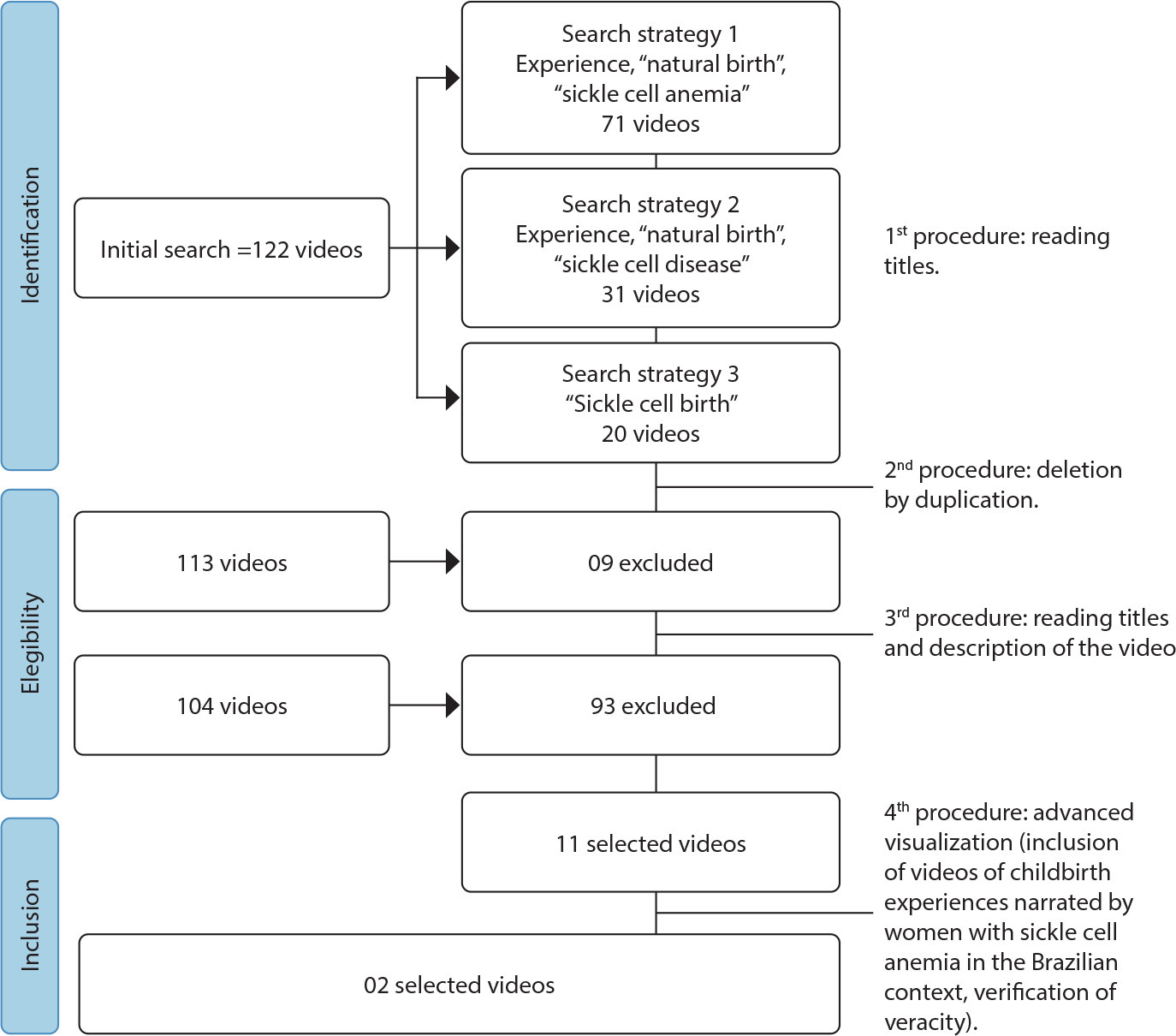
-
16/12/2024
GerenciaDOR™: development of digital technology by nurses for the assessment of patients with chronic pain
Revista Brasileira de Enfermagem. 2024;77(6):e20240050
Resumen
GerenciaDOR™: development of digital technology by nurses for the assessment of patients with chronic pain
Revista Brasileira de Enfermagem. 2024;77(6):e20240050
DOI 10.1590/0034-7167-2024-0050
Visualizações0Ver maisABSTRACT
Objectives:
to develop a digital technological solution (prototype) for assessing patients with chronic pain.
Methods:
this is a methodological and technological development study based on the Human-Centered Design framework and the principles of Patient-Centered Care. The prototype guides patients through a body diagram and directs them to an evaluation using specific instruments that address the multidimensional aspects of chronic pain.
Results:
the GerenciaDOR* project enables navigation through the Web App screens, providing access to pain assessment features up to the presentation of results.
Final Considerations:
the study describes a systematic approach to pain assessment and expands nurses’ knowledge in pain management. Additionally, it can promote the development of other digital technologies for chronic pain assessment and contribute to a multidisciplinary, patient centered treatment.
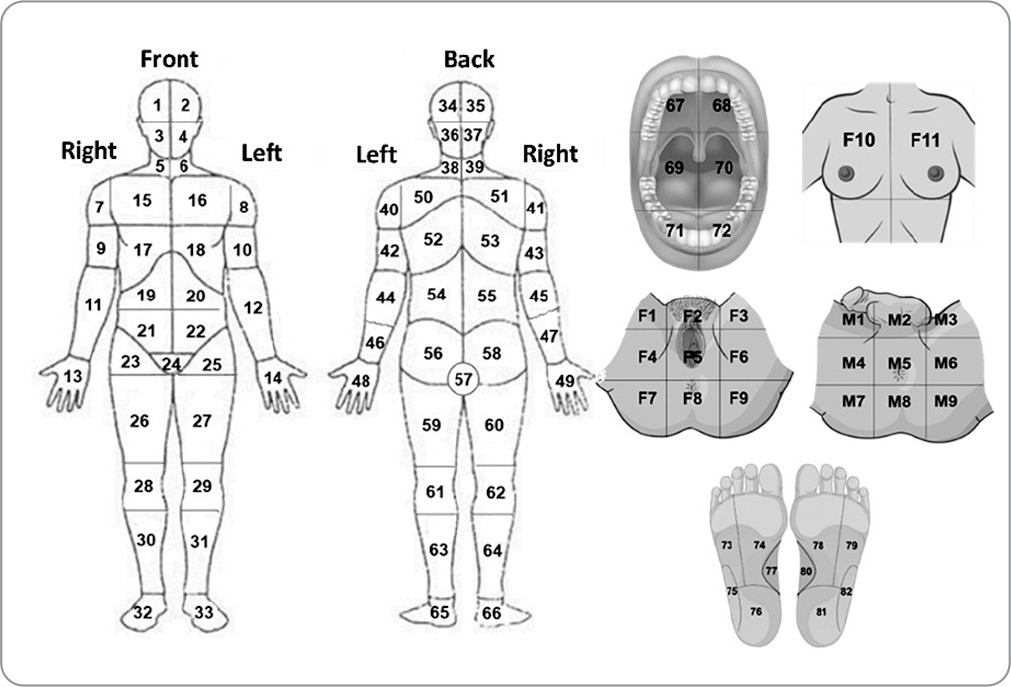
-
ARTÍCULO ORIGINAL16/12/2024
Psychometric analysis of ProQOL-BR in nursing: building hospital safety and protection
Revista Brasileira de Enfermagem. 2024;77(6):e20240085
Resumen
ARTÍCULO ORIGINALPsychometric analysis of ProQOL-BR in nursing: building hospital safety and protection
Revista Brasileira de Enfermagem. 2024;77(6):e20240085
DOI 10.1590/0034-7167-2024-0085
Visualizações0Ver maisABSTRACT
Objectives:
to analyze the psychometric properties of the ProQOL-BR instrument in hospital nursing professionals.
Methods:
a methodological study to validate the ProQOL-BR. Confirmatory factor analysis, assessment of local and global adjustment quality, Pearson hypothesis testing and Cronbach’s alpha internal consistency analysis were used.
Results:
a total of 490 professionals participated. The model presents adequate quality due to factor weights (λ≥ 0.40), acceptable overall fit quality and adequate chi-square ratio and degrees of freedom (χ2/g.1=2.51) for the parameters of CFI (0.923), GFI (0.902), TLI (0.914) and RMSEA (0.042). In terms of validity, it was shown to be adequate with CC=0.89. The internal consistency obtained by standardized Cronbach’s alpha was 0.761. Criterion validity was shown to be favorable with significant correlations (0.001).
Conclusions:
the instrument was validated regarding content, criteria and reliability. Three questions were removed from the original instrument, ProQOL-BR, leaving the final instrument with 25 questions.
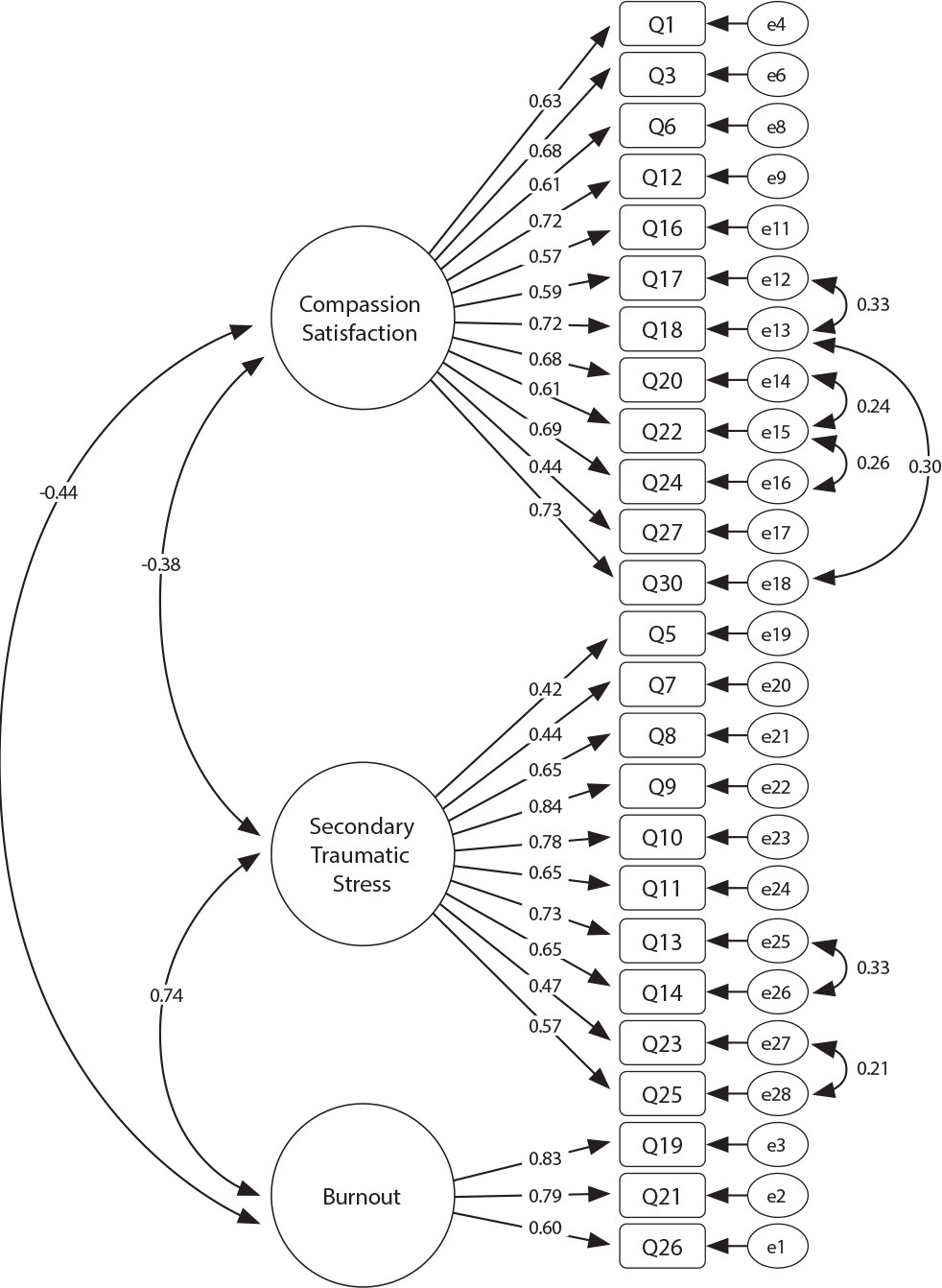
-
ARTÍCULO DE REVISIÓN16/12/2024
Recommendations for guidelines for promoting mental health in the workplace: an umbrella review
Revista Brasileira de Enfermagem. 2024;77(6):e20240086
Resumen
ARTÍCULO DE REVISIÓNRecommendations for guidelines for promoting mental health in the workplace: an umbrella review
Revista Brasileira de Enfermagem. 2024;77(6):e20240086
DOI 10.1590/0034-7167-2024-0086
Visualizações1Ver maisABSTRACT
Objectives:
to summarize the recommendations of guidelines for promoting mental health in the workplace.
Methods:
an umbrella review, according to Joanna Briggs Institute and Preferred Reporting Items for Systematic reviews and Meta-Analyses methodological assumptions. Data collection was carried out in January 2021 and updated in July 2023 in the American Psychological Association, Cochrane Library, EMBASE, National Library of Medicine, and Scopus databases. Systematic reviews that assessed guidelines with recommendations for mental health care for workers were included. PROSPERO registration CRD42023461845.
Results:
four systematic reviews published between 2015 and 2018 were identified. The abstracts highlighted actions that facilitate and inhibit the recommendations as well as three categories of intervention: primary prevention – worker protection; secondary prevention – promoting workers’ mental health; and tertiary prevention – supporting, monitoring and rehabilitating workers upon returning to work.
Conclusions:
the interventions are based on prevention, promotion and early recognition, support and rehabilitation of mental health problems.
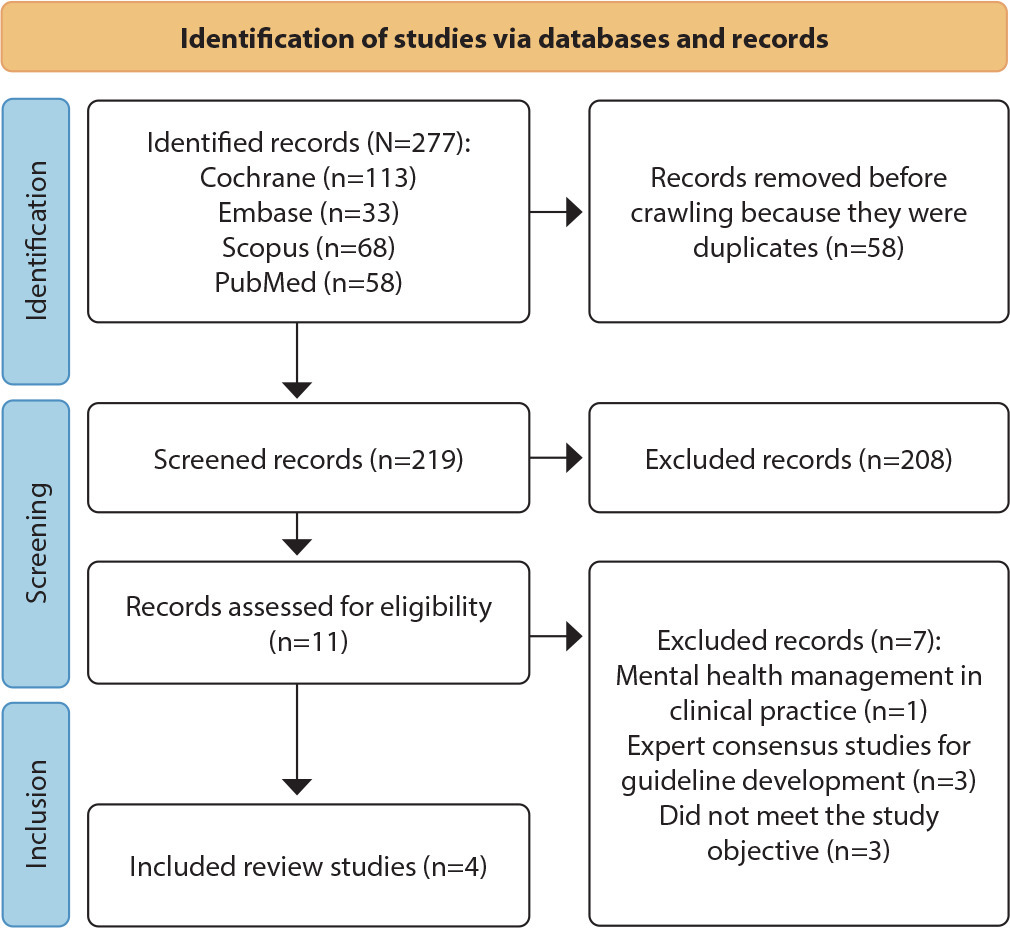
-
ARTÍCULO ORIGINAL16/12/2024
Analysis of omission of antimicrobial doses in Intensive Care Units
Revista Brasileira de Enfermagem. 2024;77(6):e20240102
Resumen
ARTÍCULO ORIGINALAnalysis of omission of antimicrobial doses in Intensive Care Units
Revista Brasileira de Enfermagem. 2024;77(6):e20240102
DOI 10.1590/0034-7167-2024-0102
Visualizações0Ver maisABSTRACT
Objectives:
to analyze the rate of antimicrobial dose omission in intensive care units.
Methods:
cross-sectional study carried out between March 1 and September 30, 2023, in intensive care units of a University Hospital in Rio de Janeiro.
Results:
the sample consisted of 452 prescriptions and 1467 antimicrobial doses. The dose omission rate was 4.29%. Each antimicrobial prescribed increased the chance of omission by 51%. The strategy of double-checking prescriptions helped prevent 30% of antimicrobial dose omissions (p=0.0001).
Conclusions:
monitoring the omission of antimicrobial doses can guide nursing actions to improve quality and patient safety, contributing to the prevention of medication errors, antimicrobial stewardship and the fight against antimicrobial resistance.
-
ARTÍCULO ORIGINAL16/12/2024
Health literacy development of Primary Health Care patients: qualitative research
Revista Brasileira de Enfermagem. 2024;77(6):e20240154
Resumen
ARTÍCULO ORIGINALHealth literacy development of Primary Health Care patients: qualitative research
Revista Brasileira de Enfermagem. 2024;77(6):e20240154
DOI 10.1590/0034-7167-2024-0154
Visualizações0Ver maisABSTRACT
Objectives:
to identify the process of health literacy development among primary care patients, relating it to their self-care practices.
Methods:
qualitative, prospective research with 22 patients from two Family Health Strategy units. Data were obtained through individual semi-structured interviews, examined through descriptive statistics and thematic content analysis.
Results:
the results discuss how participants learn about health and how this resonates in their behaviors, culminating in two thematic categories: “Health knowledge construction”; and “Dialogue between health knowledge construction and patient care actions”.
Final Considerations:
health knowledge is developed mainly through interpersonal relationships, mediated by health professionals through bonding and communication. Community educational actions and training of health professionals in communication can promote health literacy and self-care among patients.
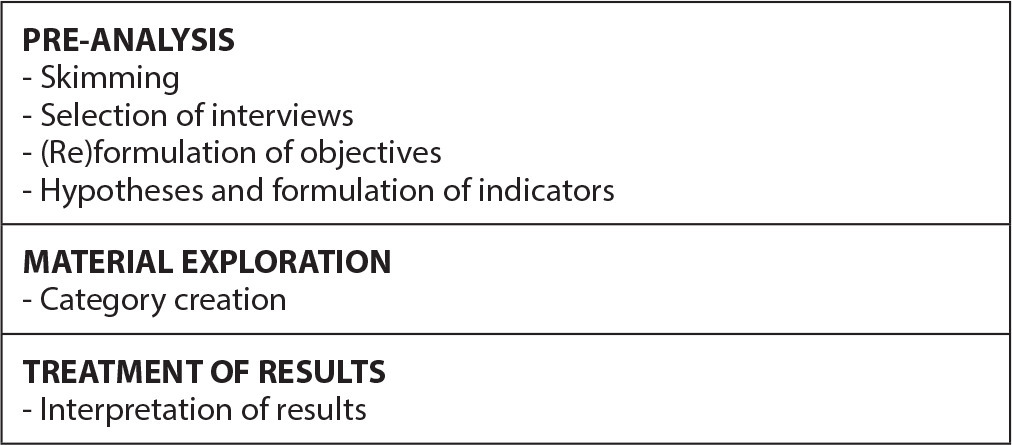
-
ARTÍCULO ORIGINAL16/12/2024
Bladder ultrasound: evidence of content validity of a checklist for training nurses
Revista Brasileira de Enfermagem. 2024;77(6):e20230183
Resumen
ARTÍCULO ORIGINALBladder ultrasound: evidence of content validity of a checklist for training nurses
Revista Brasileira de Enfermagem. 2024;77(6):e20230183
DOI 10.1590/0034-7167-2023-0183
Visualizações0Ver maisABSTRACT
Objectives:
to develop and analyze evidence of content validity of a checklist for training nurses in measuring bladder volume through ultrasound.
Methods:
a methodological study, consisting of three stages: literature review; instrument item preparation; and analysis of evidence of content validity. The Content Validity Index (CVI) and Gwet’s AC2 were used for content validity analyses.
Results:
the checklist consisted of 23 items. The CVIs for clarity, relevance and dimensionality were 0.99, 0.99 and 0.98 respectively, and the CVIs for Gwet’s AC2 with coefficients for clarity, relevance and dimensionality were 0.89, 0.97 and 0.95, respectively, with p<0.001.
Conclusions:
the checklist developed for training nurses in measuring bladder volume through ultrasound achieved adequate evidence of content validity, and can be used to train nurses in clinical practice and future research.
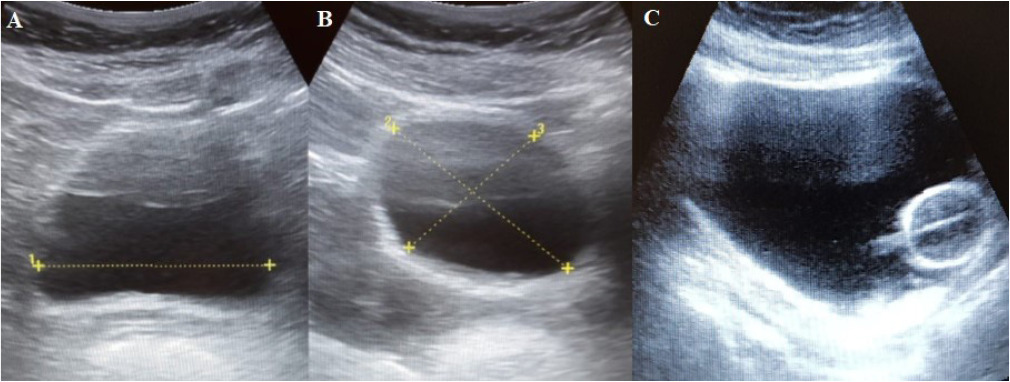
-
16/12/2024
A relação entre gênero, formação educacional e ambiente de aprendizagem com a ansiedade do estudante de enfermagem
Revista Brasileira de Enfermagem. 2024;77(6):e20220615
Resumen
A relação entre gênero, formação educacional e ambiente de aprendizagem com a ansiedade do estudante de enfermagem
Revista Brasileira de Enfermagem. 2024;77(6):e20220615
DOI 10.1590/0034-7167-2022-0615
Visualizações1Ver maisRESUMEN
Objetivos:
identificar las variables asociadas a la práctica clínica relacionadas con la ansiedad de los estudiantes de enfermería.
Métodos:
se utilizó un diseño descriptivo, cuantitativo, correlacional con las recomendaciones STROBE, EQUATOR. La población fue de 233 estudiantes de enfermería con una muestra de 135 personas. Los datos se recopilaron de marzo a abril de 2022 utilizando instrumentos validados.
Resultados:
la prueba de chi-cuadrado y razón de verosimilitud significativa para género, formación académica y entorno de aprendizaje son superiores a 0.05, por lo que no existe una relación significativa entre las variables y la ansiedad de los estudiantes.
Conclusiones:
los estudiantes necesitan prepararse nuevamente antes de ingresar al campo de la práctica. Investigaciones cualitativas también son necesarias.
-
ARTÍCULO ORIGINAL09/04/2020
Factors associated with the discontinuance of outpatient follow-up in neonatal units
Revista Brasileira de Enfermagem. 2020;73(3):e20180793
Resumen
ARTÍCULO ORIGINALFactors associated with the discontinuance of outpatient follow-up in neonatal units
Revista Brasileira de Enfermagem. 2020;73(3):e20180793
DOI 10.1590/0034-7167-2018-0793
Visualizações1Ver maisABSTRACT
Objectives:
to identify predisposing and enabling factors as well as the health needs associated with the discontinuance of outpatient follow-up of newborns who were hospitalized at neonatal intensive care unit.
Methods:
cross-sectional study, using the behavioral model of health services use. The study was composed of 358 mothers and newborns referred to the outpatient follow-up after discharge. Characterization, perception of social support, postnatal depression, and attendance to appointments data were collected, analyzed by the R software (3.3.1).
Results:
outpatient follow-up was discontinued by 31.28% of children in the first year after discharge. In multiple regression analysis, the chance of discontinuance was higher for newborns who used mechanical ventilation (OR = 1.68; 95%CI 1.04-2.72) and depended on technology (OR = 3.54; 95%CI 1.32-9.5).
Conclusions:
predisposing factors were associated with the discontinuance of follow-up; enabling factors and health needs did not present a significant association. Children with more complex health conditions require additional support to participate in follow-up programs, thus ensuring the continuity of care.

-
ERRATUM26/02/2024
ERRATUM
Revista Brasileira de Enfermagem. 2024;77(1):e20160061
Resumen
ERRATUMERRATUM
Revista Brasileira de Enfermagem. 2024;77(1):e20160061
DOI 10.1590/0034-7167.20247701e03
Visualizações2In the article “Nurses in the labor market: professional insertion, competencies and skills”, with DOI number: , published in Revista Brasileira de Enfermagem, 2017;70(6):1220-6, on page 1225:Include before REFERENCES:[…]Ver mais -
ARTÍCULO DE REVISIÓN08/12/2024
Interventions for Strengthening General Self-Efficacy Beliefs in College Students: An Integrative Review
Revista Brasileira de Enfermagem. 2024;77(1):e20230192
Resumen
ARTÍCULO DE REVISIÓNInterventions for Strengthening General Self-Efficacy Beliefs in College Students: An Integrative Review
Revista Brasileira de Enfermagem. 2024;77(1):e20230192
DOI 10.1590/0034-7167-2023-0192
Visualizações0Ver maisABSTRACT
Objective:
To assess the evidence regarding the effectiveness of interventions aimed at strengthening self-efficacy beliefs in college students.
Methods:
Integrative Review conducted on the Lilacs, PubMed, CinahL, Cochrane Collaboration Databases, Scopus, and PsycInfo databases. The methodological quality of the studies was assessed using tools proposed by the Joanna Briggs Institute, and the results were analyzed descriptively.
Results:
Out of the 10 selected studies, six demonstrated that interventions aimed at strengthening self-efficacy were effective (Levels of Evidence II and III), and four revealed contrary results (Levels of Evidence I and II). Programs aimed at enhancing self-efficacy should include content on positive mental health, psychoeducation strategies, cover a period of eight to twelve weeks, and consider the completion of homework assignments.
Conclusion:
The synthesis of evidence pointed to pathways for building an effective self-efficacy strengthening program to be implemented in universities.
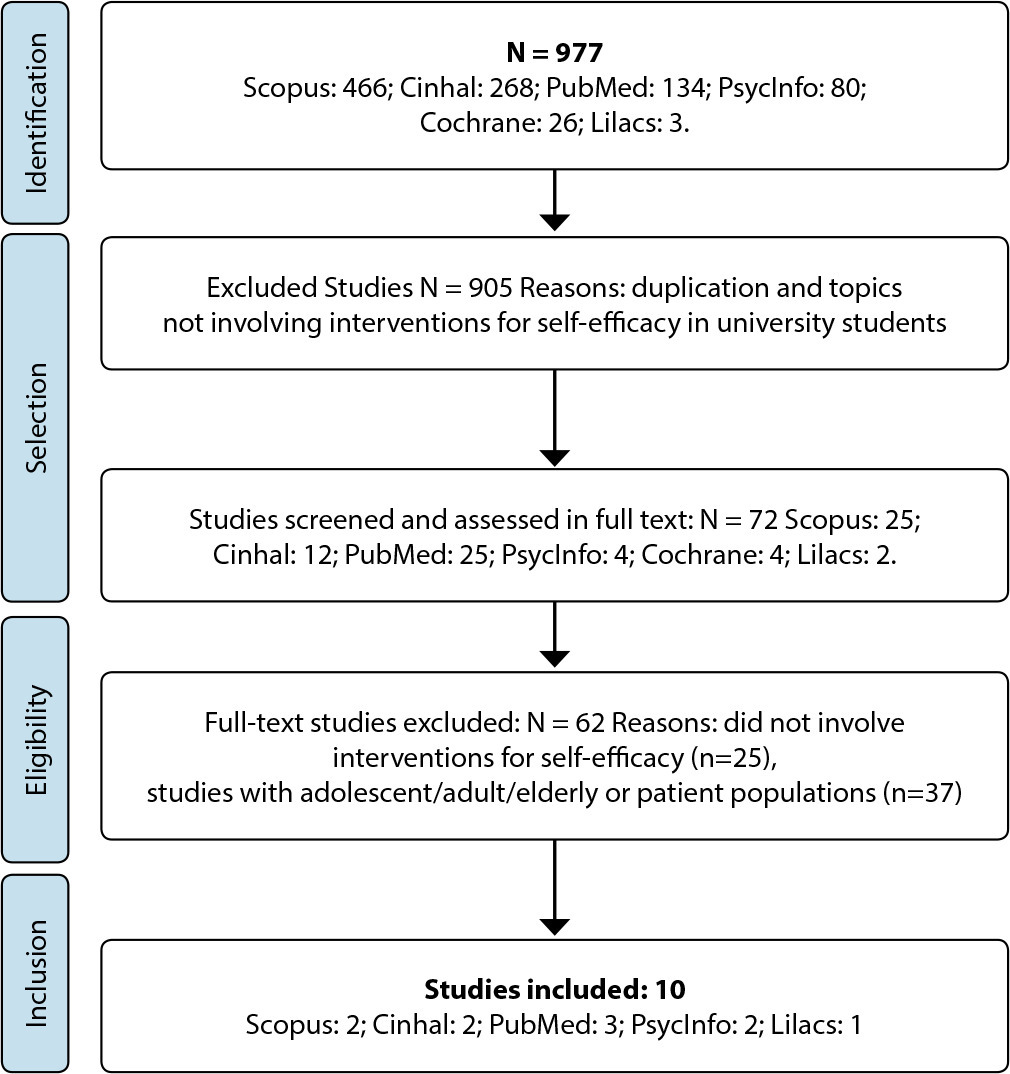
-
ARTÍCULO ORIGINAL13/05/2024
Generalized Resistance Deficits in inmates with hypertension: missing resources that limit health
Revista Brasileira de Enfermagem. 2024;77(2):e20230246
Resumen
ARTÍCULO ORIGINALGeneralized Resistance Deficits in inmates with hypertension: missing resources that limit health
Revista Brasileira de Enfermagem. 2024;77(2):e20230246
DOI 10.1590/0034-7167-2023-0246
Visualizações0Ver maisABSTRACT
Objective:
to understand the Generalized Resistance Deficits of people deprived of liberty with hypertension in a Brazilian prison unit.
Method:
qualitative research, anchored in Salutogenesis, carried out with 38 people with hypertension from a Brazilian prison unit, from February to July 2022, with a semi-structured interview with open-ended questions, whose analysis was thematic, explaining the limitations to health in prison.
Results:
13 Generalized Resistance Deficits were reported, mostly related to the prison environment and, to a lesser extent, to the social group and the individual, respectively. Living in prison for people with hypertension implies living with a high number of Generalized Resistance Deficits, accentuating the movement towards the disease pole.
Final considerations:
knowing Generalized Resistance Deficits allows directing health promotion to support the use of available Generalized Resistance Resources and contributes to the expansion of intersectoral policies.
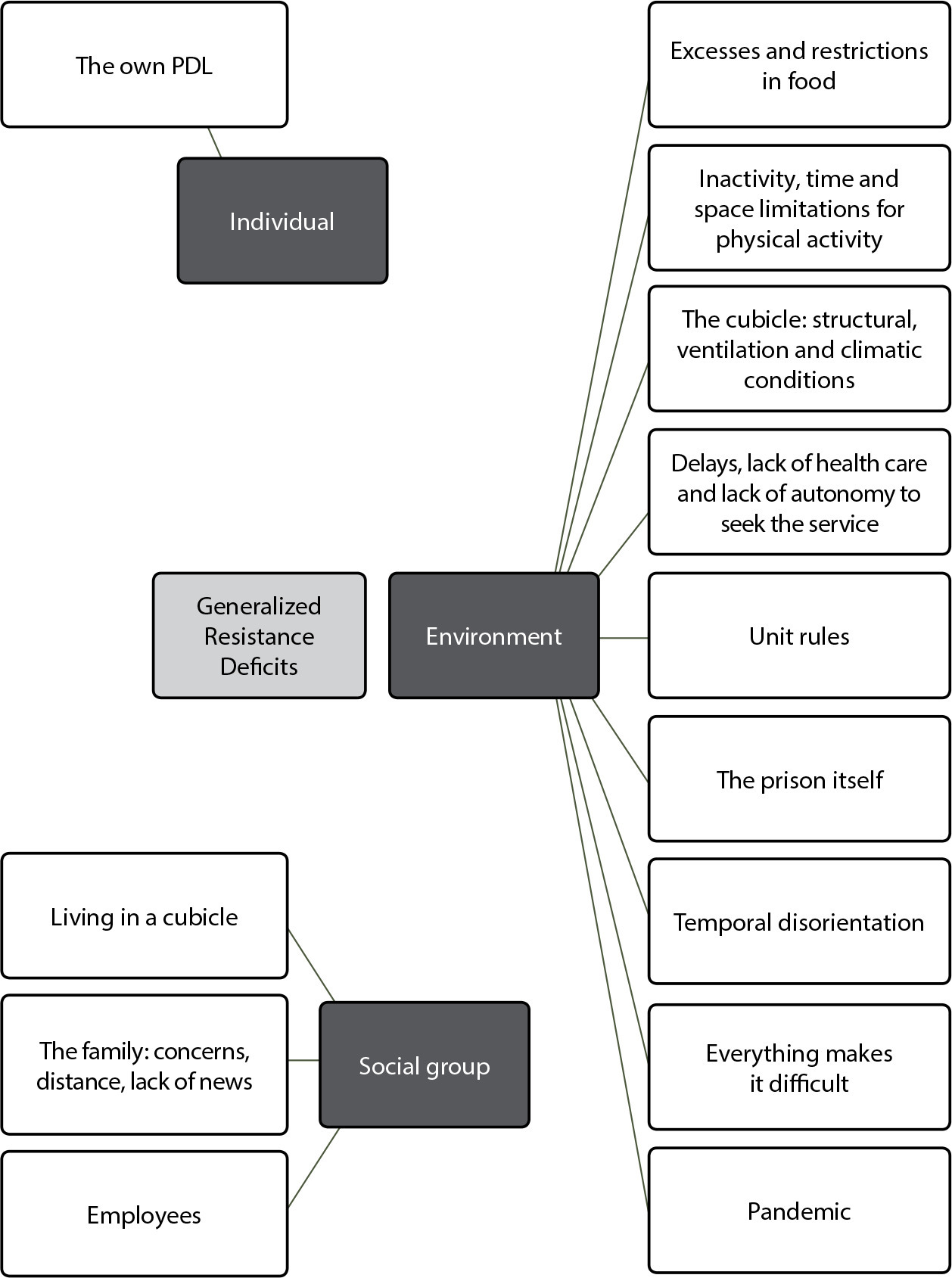
-
ERRATUM14/06/2024
ERRATUM
Revista Brasileira de Enfermagem. 2024;77(2):e2024n2e05
Resumen
ERRATUMERRATUM
Revista Brasileira de Enfermagem. 2024;77(2):e2024n2e05
DOI 10.1590/0034-7167.20247702e05
Visualizações2In the article “Educational technologies used to promote self-care for people with diabetes mellitus: integrative review”, with DOI number: , published in Revista Brasileira de Enfermagem, 2023;76(Suppl 4):e20230049, in the title:Where it read:[…]Ver mais -
ERRATUM14/06/2024
ERRATUM
Revista Brasileira de Enfermagem. 2024;77(2):e2024n2e06
Resumen
ERRATUMERRATUM
Revista Brasileira de Enfermagem. 2024;77(2):e2024n2e06
DOI 10.1590/0034-7167.20247702e06
Visualizações2In the article “Is there scientific relevance to the plot of films and documentaries about eating disorders?”, with DOI number: , published in Revista Brasileira de Enfermagem, 2024;77(1):e20220547, page 7:Where it read:[…]Ver mais -
ARTÍCULO DE REVISIÓN29/07/2024
Profile of scientific production on nursing technology construction, validity and application: a bibliometric study
Revista Brasileira de Enfermagem. 2024;77(3):e20230452
Resumen
ARTÍCULO DE REVISIÓNProfile of scientific production on nursing technology construction, validity and application: a bibliometric study
Revista Brasileira de Enfermagem. 2024;77(3):e20230452
DOI 10.1590/0034-7167-2023-0452
Visualizações1Ver maisABSTRACT
Objective:
to analyze the profile of scientific production on nursing technology construction, validity and application.
Methods:
this is a bibliometric study, carried out in six databases, based on the Methodi Ordinatio application, arranged in nine stages. To represent the findings, the VOSviewer® software was used.
Results:
346 studies were identified, obtained from BDENF, CINAHL, EMBASE, LILACS, PubMed/MEDLINE, Scopus and Web of Science. There was a predominance of the English language, and 20% of the authors hold more than 25% of studies. Only two journals account for 25% of studies in the period studied. Twenty-six studies were selected for the InOrdinatio classification. Nursing Process (23%) stood out among the studies. The most produced technology was software (27%), and 50% of works describe construction and validity.
Conclusions:
there is an emphasis on the creation of educational technologies, especially information technology. The data demonstrates opportunities for future research in the area.

-
ARTÍCULO ORIGINAL10/01/2024
Inventory of ethical problems in mobile pre-hospital care
Revista Brasileira de Enfermagem. 2024;77:e20230539
Resumen
ARTÍCULO ORIGINALInventory of ethical problems in mobile pre-hospital care
Revista Brasileira de Enfermagem. 2024;77:e20230539
DOI 10.1590/0034-7167-2023-0539
Visualizações1Ver maisABSTRACT
Objective:
to construct and validate the content of an inventory of ethical problems experienced by nurses in mobile pre-hospital care.
Method:
a psychometric approach study, developed with the following stages: (1) instrument construction through a theoretical matrix based on deliberative bioethics, scoping review and online qualitative research; (2) content validity by judges; (3) pre-testing with Mobile Emergency Care Service nurses in various Brazilian states. For content validity analysis, the Content Validity Ratio was calculated (CVR>0.45 for judges and CVR>0.35 for the target population).
Results:
the instrument had 44 items, distributed across four dimensions.
Final considerations:
the constructed instrument presented sources of evidence of content validity, providing good psychometric measurements and constituting a useful tool for nurses’ practice in the pre-hospital setting.
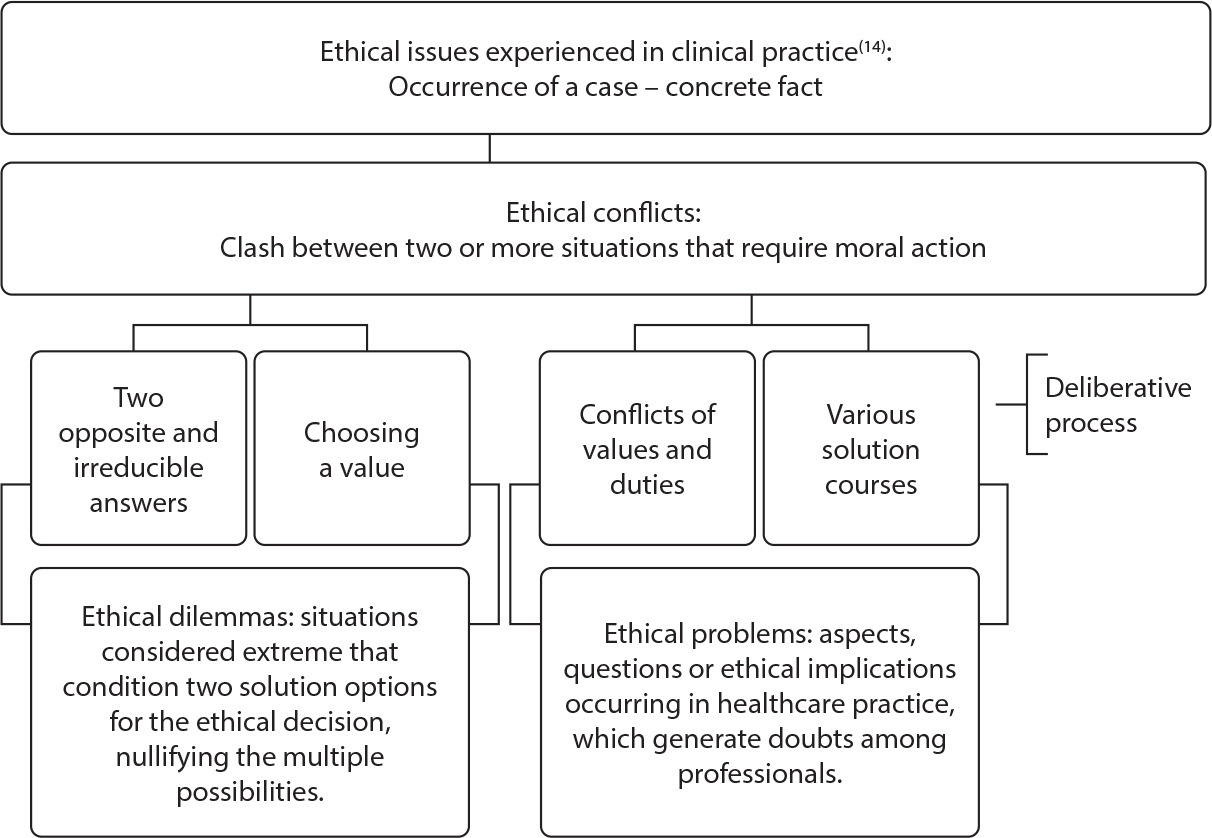
-
ARTÍCULO ORIGINAL13/07/2020
Cultura de segurança do paciente em unidades hospitalares de ginecologia e obstetrícia: estudo transversal
Revista Brasileira de Enfermagem. 2020;73(5):e20190576
Resumen
ARTÍCULO ORIGINALCultura de segurança do paciente em unidades hospitalares de ginecologia e obstetrícia: estudo transversal
Revista Brasileira de Enfermagem. 2020;73(5):e20190576
DOI 10.1590/0034-7167-2019-0576
Visualizações1RESUMO
Objetivos:
avaliar a cultura de segurança do paciente da equipe de saúde que atua em três maternidades.
Métodos:
estudo observacional, transversal, comparativo. Participaram do estudo 301 profissionais. Utilizou-se o questionário Hospital Survey on Patient Safety Culture validado no Brasil. Para a análise dos dados, considerou-se área forte na cultura de segurança do paciente quando as respostas positivas atingiram acima de 75%; e áreas que precisam de melhorias quando as respostas positivas atingiram menos de 50%. Para a comparação dos resultados, empregou-se desvio-padrão e regra do polegar.
Resultados:
das 12 dimensões da cultura de segurança do paciente, nenhuma obteve escore acima de 75%, sendo nove dimensões com escore entre 19% e 43% e três dimensões entre 55% e 57%.
Conclusões:
não foram identificadas dimensões fortes para cultura de segurança nas três maternidades. Acredita-se que esses resultados possam contribuir na elaboração de políticas que promovam a cultura de segurança nas instituições.
Palavras-chave: Cultura OrganizacionalEquipe de Assistência ao PacienteEstudos TransversaisSegurança do PacienteUnidade Hospitalar de Ginecologia e ObstetríciaVer mais -
ARTÍCULO ORIGINAL21/09/2020
Autonomia na saúde reprodutiva de mulheres quilombolas e fatores associados
Revista Brasileira de Enfermagem. 2020;73:e20190786
Resumen
ARTÍCULO ORIGINALAutonomia na saúde reprodutiva de mulheres quilombolas e fatores associados
Revista Brasileira de Enfermagem. 2020;73:e20190786
DOI 10.1590/0034-7167-2019-0786
Visualizações0RESUMO
Objetivo:
Identificar o nível de autonomia reprodutiva de mulheres quilombolas e associá-lo com características sociodemográficas e aspectos da saúde sexual e reprodutiva.
Métodos:
Estudo censitário transversal realizado em comunidades quilombolas de um município baiano. Os dados foram coletados por meio dos questionários da Pesquisa Nacional de Saúde e da Escala de Autonomia Reprodutiva, aplicados às mulheres quilombolas que aceitaram participar. Utilizaram-se procedimentos da estatística descritiva e realizaram-se associações entre os escores de autonomia reprodutiva e as características sociodemográficas e reprodutivas.
Resultados:
O escore médio total de autonomia reprodutiva foi 2,06. Verificou-se associação entre o escore de “tomada de decisão” e estado conjugal. O escore de “autonomia reprodutiva total” foi associado à utilização de método contraceptivo.
Conclusão:
A realidade das participantes do estudo converge com a literatura quanto à interferência de fatores sociodemográficos e reprodutivos na autonomia reprodutiva de mulheres negras.
Palavras-chave: Autonomia PessoalFatores SocioeconômicosGrupo com Ancestrais do Continente AfricanoMulheresSaúde ReprodutivaVer mais -
ARTÍCULO ORIGINAL01/06/2020
Binge drinking and overweight in brazilian adults – CUME Project
Revista Brasileira de Enfermagem. 2020;73:e20190316
Resumen
ARTÍCULO ORIGINALBinge drinking and overweight in brazilian adults – CUME Project
Revista Brasileira de Enfermagem. 2020;73:e20190316
DOI 10.1590/0034-7167-2019-0316
Visualizações0Ver maisABSTRACT
Objective:
To verify the association between heavy episodic alcohol consumption [binge drinking (BD)] and overweight in 2,909 adults from the Cohort of Universities of Minas Gerais (CUME Project) baseline, Brazil.
Method:
Cross-sectional study in which sociodemographic, anthropometric (BMI ≥ 25 kg/m2 = overweight) and dietary intake data were collected. This study evaluated the occurrence and monthly frequency of BD (≥ 4 drinks at one time for women; ≥ 5 drinks at one time for men, in the last 30 days).
Results:
The prevalence of BD and overweight were 41.3% and 40.8%, respectively. BD increased the prevalence of overweight by 19%, and, BD exposure by ≥ 5 days / month increased it by 31%.
Conclusion:
BD on a single or multiple occasion during the month was associated with a higher prevalence of overweight. Therefore, such a lifestyle should be considered in weight gain prevention strategies.
-
ARTÍCULO ORIGINAL07/04/2023
The use of toys by nursing as a therapeutic resource in the care of hospitalized children
Revista Brasileira de Enfermagem. 2023;76(2):e20220433
Resumen
ARTÍCULO ORIGINALThe use of toys by nursing as a therapeutic resource in the care of hospitalized children
Revista Brasileira de Enfermagem. 2023;76(2):e20220433
DOI 10.1590/0034-7167-2022-0433
Visualizações0Ver maisABSTRACT
Objectives:
to describe the use of toys by nursing during the care of children in the inpatient unit; to analyze the factors that influence the use of therapeutic toys by nursing in the care of hospitalized children.
Methods:
qualitative research, conducted in a pediatric hospital in Rio de Janeiro between July and August 2019. Semi-structured interview and thematic analysis were used as methodological procedure.
Results:
the 12 nurses and 7 nursing technicians revealed minimizing fear, relieving tension, and creating a bond between the child and the professional as the main benefits; they use as resources: children’s toys, hospital materials, cartoons, and children’s videos. The high demand for work, deficit of human resources, and appropriate ludic materials are factors that interfere with the use of toys as a therapeutic resource.
Final Considerations:
although the participants recognize the importance of the toy as a therapeutic resource, there is no systematization of its use in pediatric practice.
-
ARTÍCULO DE REVISIÓN29/09/2022
Cuidados paliativos na Atenção Primária à Saúde: revisão integrativa de literatura
Revista Brasileira de Enfermagem. 2022;75(1):e20201335
Resumen
ARTÍCULO DE REVISIÓNCuidados paliativos na Atenção Primária à Saúde: revisão integrativa de literatura
Revista Brasileira de Enfermagem. 2022;75(1):e20201335
DOI 10.1590/0034-7167-2020-1335
Visualizações0RESUMO
Objetivos:
analisar evidências cientificas sobre a implementação e realização dos cuidados paliativos na Atenção Primária à Saúde.
Métodos:
revisão integrativa da literatura, segundo o Preferred Reporting Items for Systematic Reviews and Meta-Analyses, realizada nas bases de dados PubMed, SciVerse Scopus e LILACS, em dezembro de 2020, sem recorte temporal.
Resultados:
foram analisados 22 artigos científicos originais, 14 classificados com nível de evidência VI. Objetivou-se compreender as experiências e os papéis de profissionais, pacientes e familiares sobre cuidados paliativos na Atenção Primária à Saúde, artigos voltados para a temática de gestão e organização dos serviços de saúde e sobre a importância de intervenções educativas na temática.
Considerações Finais:
evidências encontradas relacionando cuidados paliativos na Atenção Primária à Saúde apontam para a possibilidade desse cuidado; equipes de saúde atuam de maneira próxima a família e seu domicílio, porém ainda se percebe a necessidade de ampliação deste tema.
Palavras-chave: Atenção Primária à SaúdeCuidados PaliativosEnfermagemEstratégia Saúde da FamíliaRevisãoVer mais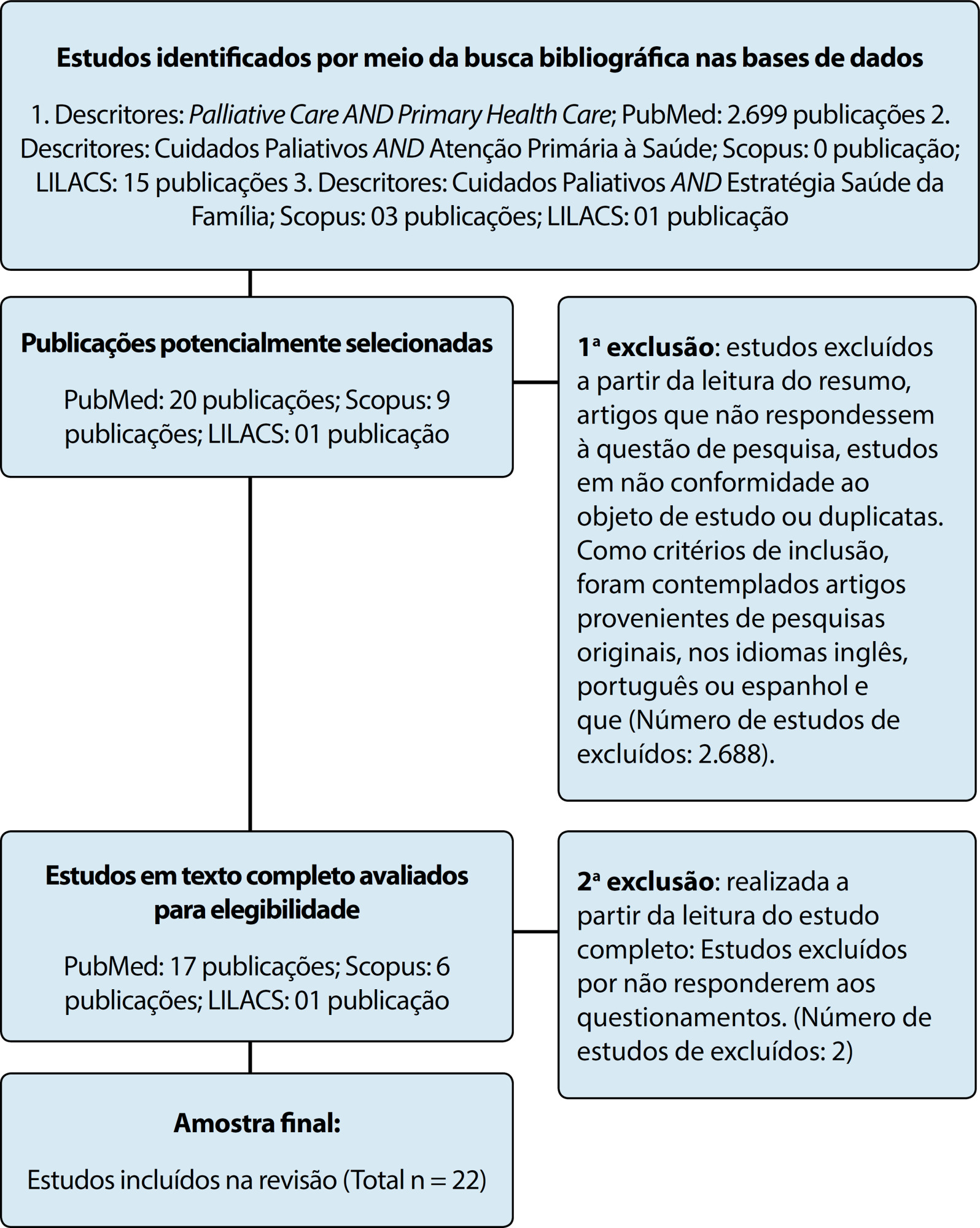
-
28/06/2021
Trends in fertility rates, proportion of antenatal consultations and caesarean sections among Brazilian adolescents
Revista Brasileira de Enfermagem. 2021;74:e20200884
Resumen
Trends in fertility rates, proportion of antenatal consultations and caesarean sections among Brazilian adolescents
Revista Brasileira de Enfermagem. 2021;74:e20200884
DOI 10.1590/0034-7167-2020-0884
Visualizações1Ver maisABSTRACT
Objective:
To analyze the temporal trends in the fertility rate, proportion of antenatal consultations and caesarean sections in Brazilian adolescents aged 15 to 19, between 2000 and 2015. Methods: The fertility rate, proportion of prenatal consultations and proportion of routes of birth were calculated using data from DATASUS. The trend analysis was performed using the Prais-Winsten regression model and the annual percentage change.
Results:
There was a trend of reduction of 3.5% per year in the fertility rate among adolescents (p<0.05), in addition to an increasing trend of 6% per year in the proportion of more than six antenatal consultations (p <0.0001) and an increasing trend of 6.8% per year in the proportion of caesarean sections (p<0.0001).
Conclusion:
Despite the decreasing trend in fertility rates among Brazilian adolescents, they remain high. Also noteworthy is the growing trend for caesarean sections, even with improved access to antenatal care.
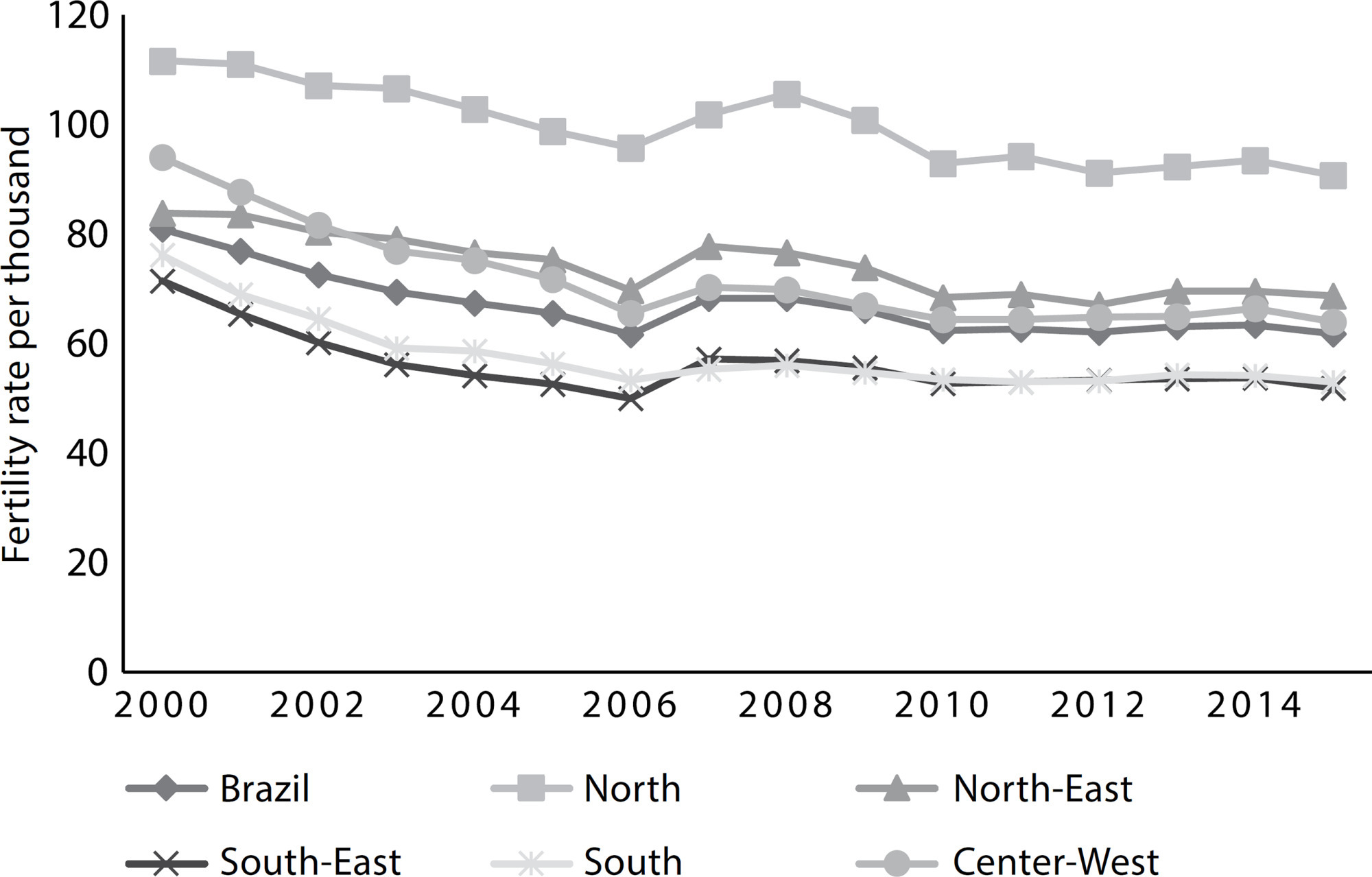
-
INFORME DE EXPERIENCIA13/11/2020
Pedagogical mediations for non-formal nursing teaching during the COVID-19 pandemic
Revista Brasileira de Enfermagem. 2020;73:e20200499
Resumen
INFORME DE EXPERIENCIAPedagogical mediations for non-formal nursing teaching during the COVID-19 pandemic
Revista Brasileira de Enfermagem. 2020;73:e20200499
DOI 10.1590/0034-7167-2020-0499
Visualizações0Ver maisABSTRACT
Objective:
to report the experience of developing pedagogical mediations in a Virtual Learning Environment implemented in a nursing faculty during the COVID-19 pandemic.
Methods:
an experience report on the construction of a distance course aimed at graduates and residents of a nursing faculty at a public university located in the city of Rio de Janeiro.
Results:
the course’s conception, operationalization and implementation were the result of a collective work that culminated in a non-formal, virtual and problematic teaching process, which reached a participation rate of 82% of enrolled students.
Final considerations:
even in times of social isolation, the course promoted collaborative learning of knowledge about COVID-19 and strengthened the relationship between professors and students. The possibility of carrying out distance activities based on solid methodological proposals that contradict the content logic often observed in distance learning is emphasized.
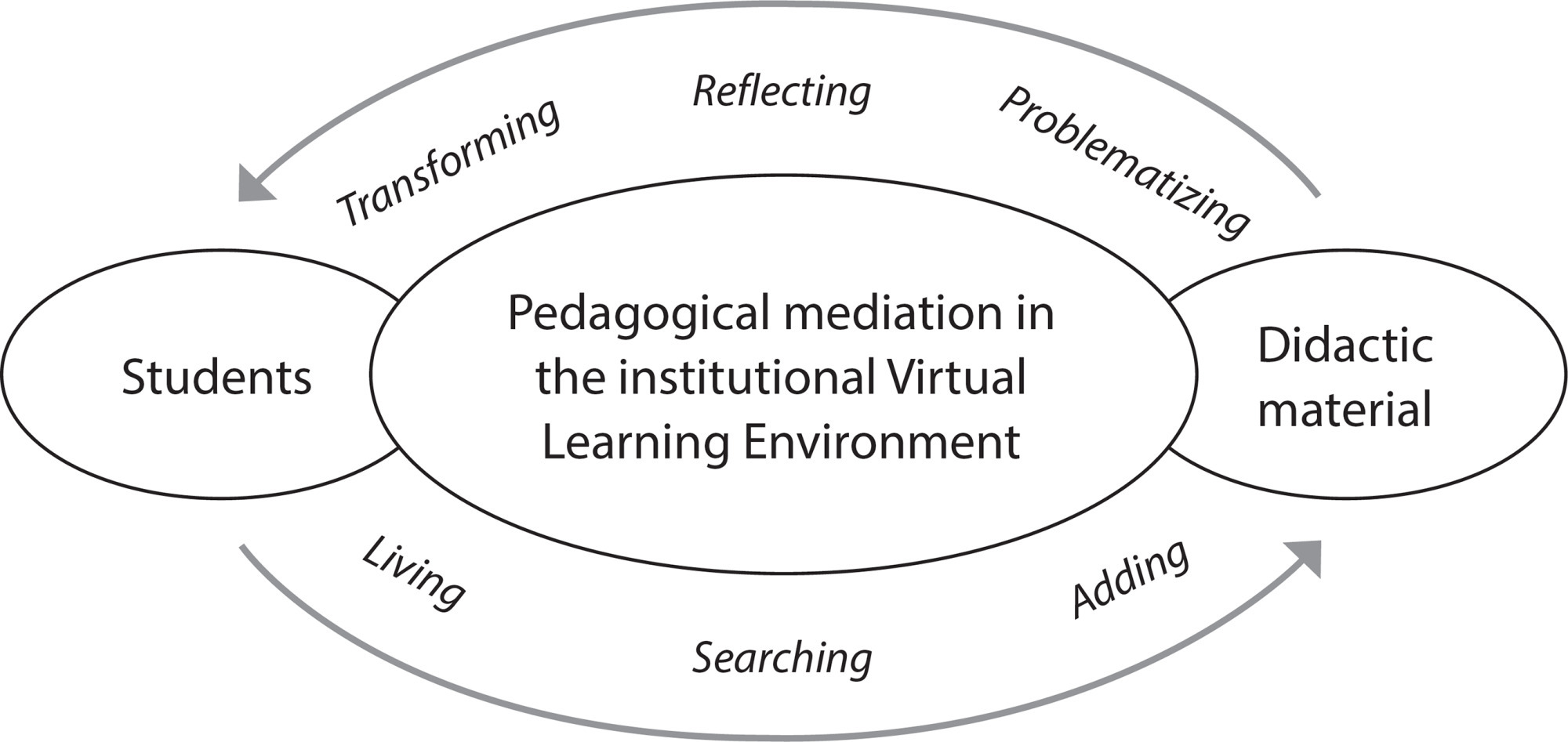
-
ARTÍCULO ORIGINAL01/06/2020
Condições de estrutura e processo na implantação do Sistema de Informação de Imunização do Brasil
Revista Brasileira de Enfermagem. 2020;73(4):e20180939
Resumen
ARTÍCULO ORIGINALCondições de estrutura e processo na implantação do Sistema de Informação de Imunização do Brasil
Revista Brasileira de Enfermagem. 2020;73(4):e20180939
DOI 10.1590/0034-7167-2018-0939
Visualizações0RESUMO
Objetivos:
analisar as condições estruturais e de processo na implantação do Sistema de Informação do Programa Nacional de Imunização.
Métodos:
estudo transversal realizado em 307 salas de vacinação em Minas Gerais em 2017. Para a coleta de dados, foi utilizado um questionário multidimensional. Procedeu-se a análise descritiva dos dados.
Resultados:
as salas de vacinação possuem insumos básicos necessários para a implantação do Sistema. Os maiores problemas relacionam-se às práticas dos profissionais. Identificaram-se baixo cadastro da população adscrita, falhas na busca ativa de faltosos, no aprazamento de vacinas e ausência de relatórios para monitorar a cobertura vacinal. As capacitações foram consideradas insuficientes e pouco efetivas.
Conclusões:
o Sistema de Informação de Imunização é uma inovação tecnológica essencial para o gerenciamento das ações de imunização, mas ainda são desafios a produção de registros oportunos e o uso da informação. Investimentos em capacitações são necessárias para garantir as atividades de gestão e operacionalização do Sistema.
Palavras-chave: EnfermagemEstudos de AvaliaçãoProgramas de ImunizaçãoSistema de Informação em SaúdeTecnologia de InformaçãoVer mais
Búsqueda
Buscar en:
Nuvem de Tags
Adolescente (85) Atenção Primária à Saúde (239) COVID-19 (91) Criança (91) Cuidados de Enfermagem (269) Educação em Enfermagem (151) Educação em Saúde (139) Enfermagem (930) Enfermagem Pediátrica (86) Estudantes de Enfermagem (77) Estudos de Validação (131) Família (87) Idoso (208) Promoção da Saúde (99) Qualidade de Vida (104) Saúde do Trabalhador (86) Saúde Mental (145) Saúde Pública (82) Segurança do Paciente (150) Tecnologia Educacional (100)



